The Rise of the Selby Avenue Streetcar Line
As the population of St. Paul grew, people began moving out of the city’s core and into quieter, cleaner residential areas west of downtown. One of the most popular areas to live in the late 1800s was the St. Anthony Hill (now Cathedral Hill) area. People still needed to get from their homes on top of the hill, to the offices, factories, and shops downtown, as well as into the transportation hub – Union Depot. To facilitate this, the Selby Avenue streetcar line was built in 1888 and was quickly extended to the Merriam Park neighborhood in 1890. By 1906, even more westward expansion was needed, so the Selby line merged with the Lake Street line in Minneapolis–which had just been completed the year before. In order to bring the two lines together, a track was laid across the wrought-iron Lake Street bridge. At that time the bridge, originally built in 1889, was the second oldest bridge in use that crossed the Mississippi River.

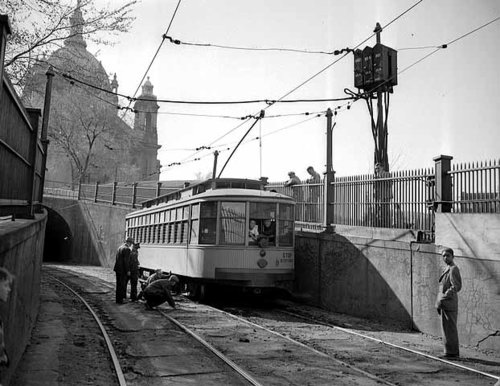
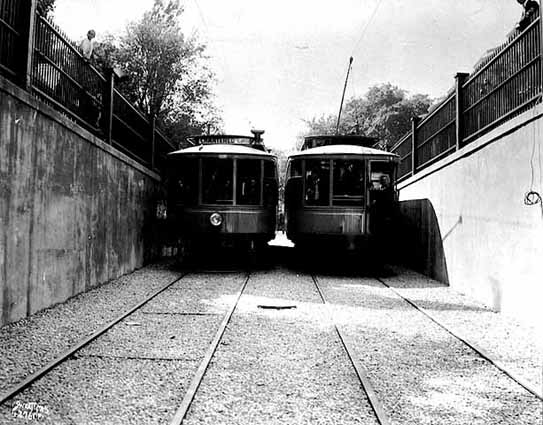
With the newly christened Selby-Lake line up and running, the streetcars made runs between Minneapolis and St. Paul at all times of the day. Most of the ride was steady and uneventful; people often remarked how lovely it was to ride with the gentle rocking of the car and the various things to see along the line. But once the streetcar reached the 16 percent grade of the St. Anthony Hill, the ride became slower, rougher, and there were often long backups. The counterweight system could not handle all of the streetcars that needed to ascend and descend the hill quickly enough to avoid delays–especially in the winter.
A plan was devised in 1906 to cut a tunnel that would lower the grade to seven percent, which was manageable for the electric streetcars to handle without counterweights. After a year of digging, the two track tunnel opened in 1907. Streetcars bound for downtown St. Paul would simply dip below the surface of Selby near Nina Street and descend quickly through the 920-foot long passage to emerge at the base of the hill. Riders heading out of St. Paul rode through the same close, dark passage, but at a slower pace. A two man crew operated each car–a motorman who controlled the car and a conductor who collected the fare from those entering through the rear door. The streetcars ran every three minutes during peak travel times and every seven minutes during off-peak hours.
Businesses quickly sprung up along the Selby line and catered to people’s daily needs. By 1930, roughly the peak of streetcar commerce, there were nearly one hundred businesses on Selby between Western and Lexington Parkway. Grocers, butchers, confectioneries, cobblers, movie houses, pharmacies, tailors, and dressmakers all lined the corridor. The corner of Selby and Dale was the hub; at one time there were 26 businesses on a single block.
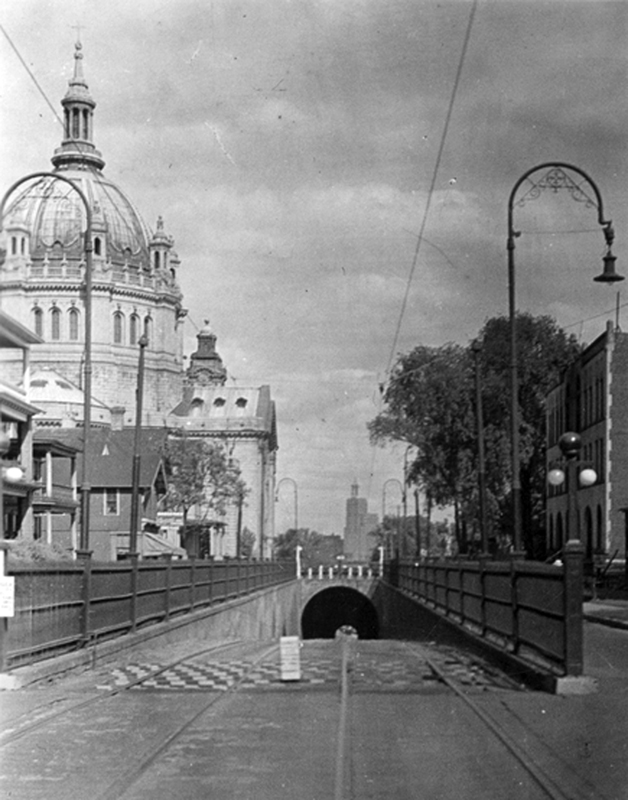
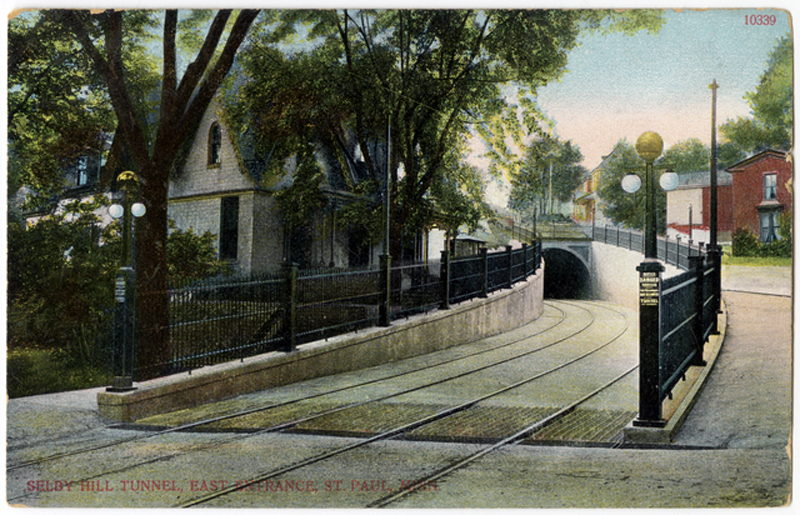
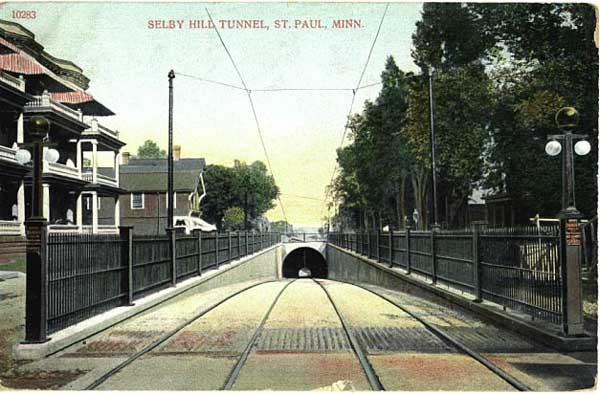
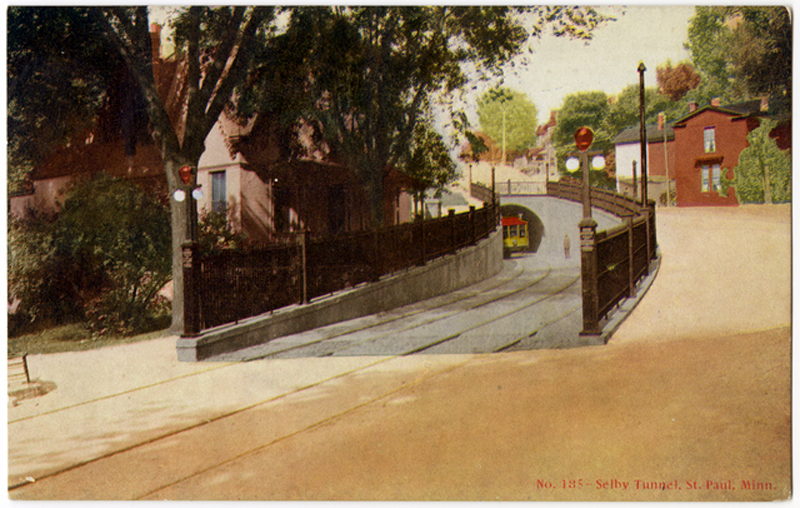
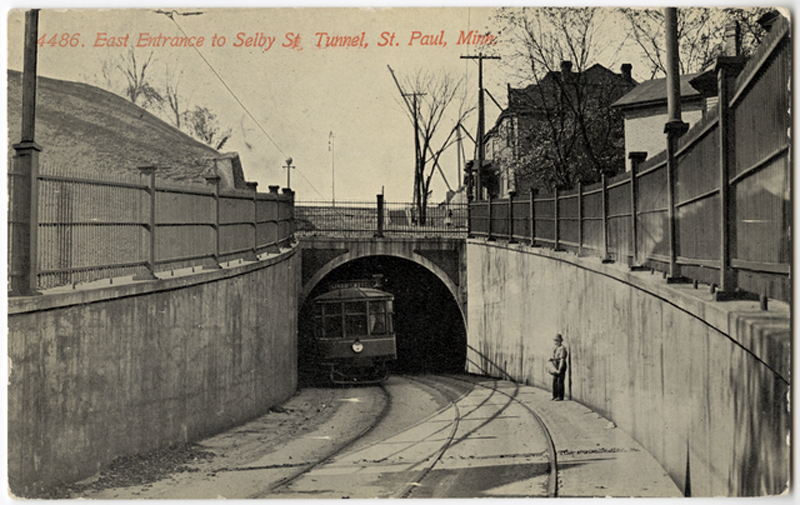
By the end of World War II, the streetcar system began to see a decline in riders. Tracks in both Minneapolis and St. Paul were being torn up and paved over to provide more space for the increasing number of automobiles. In 1953, streetcars stopped rolling along the Selby line. The tracks were torn up and both ends of the tunnel were blocked from motorists. The tunnel was officially closed in 1959. The upper entrance on Selby was completely dismantled, sealed, and paved over. The lower entrance was superficially sealed, but up until the mid-1980s it was still accessible to homeless people looking for a winter reprieve.
Today, the lower entrance to the tunnel can still be seen below the Cathedral of St. Paul, complete with tracks appearing from a thick concrete wall that blocks anyone from going inside. These streetcar tracks are rare. Very few others are still visible in the city. The ornamental iron picket fence on both sides of the channel can still be seen and are original to 1907.
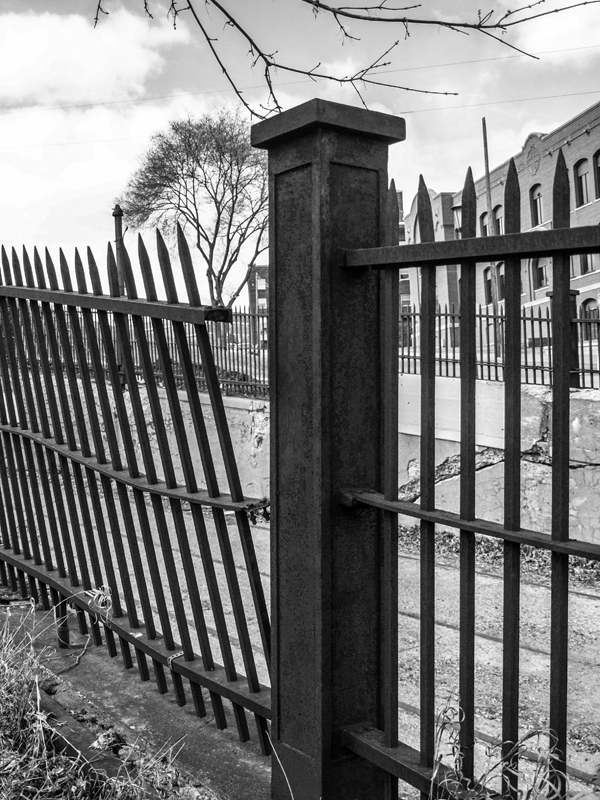
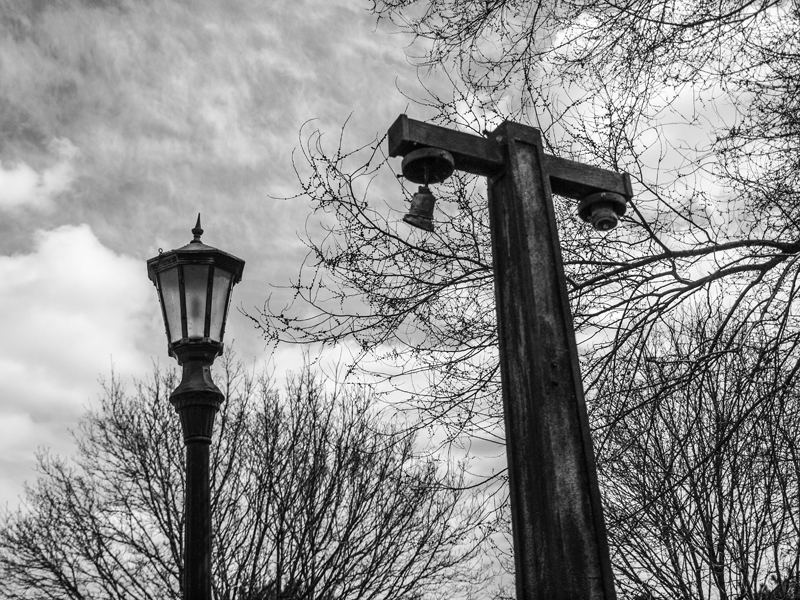
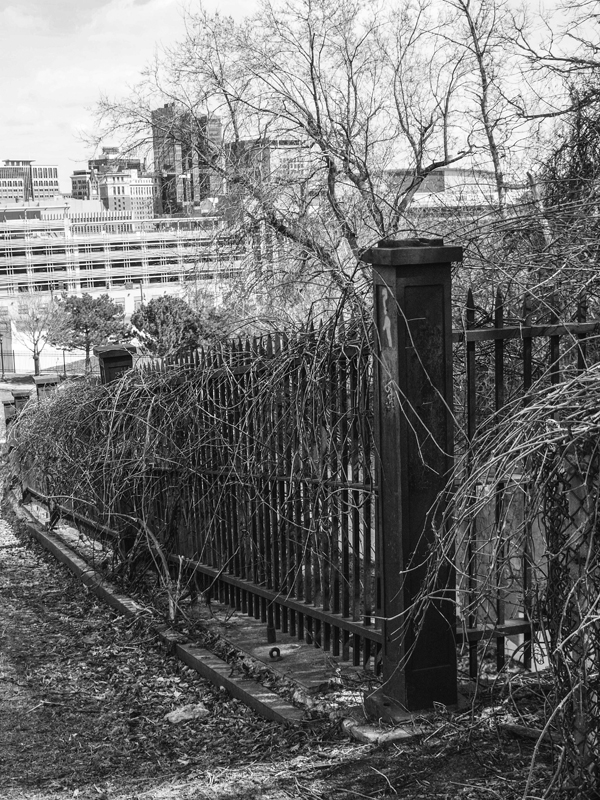
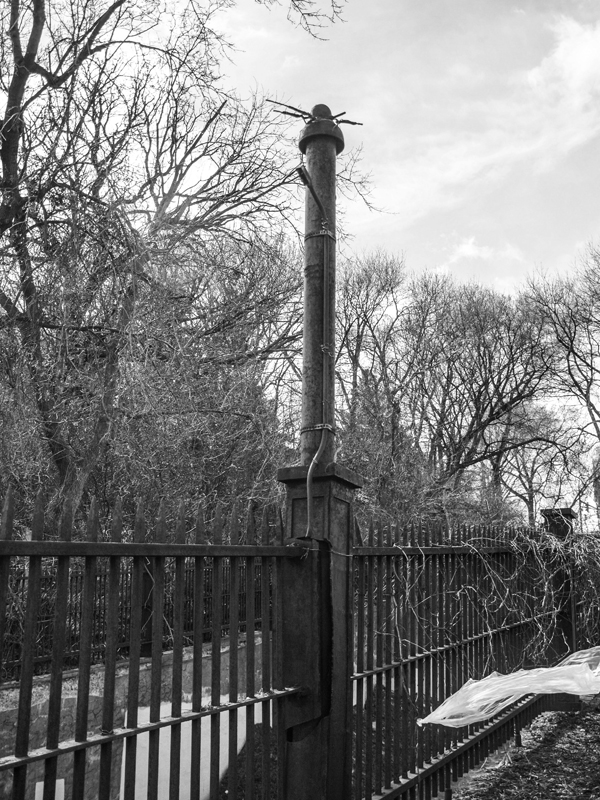
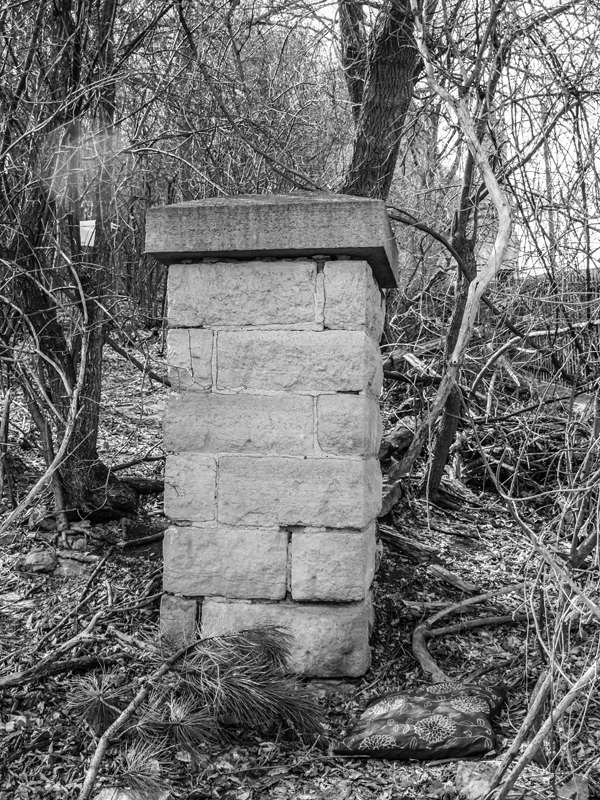
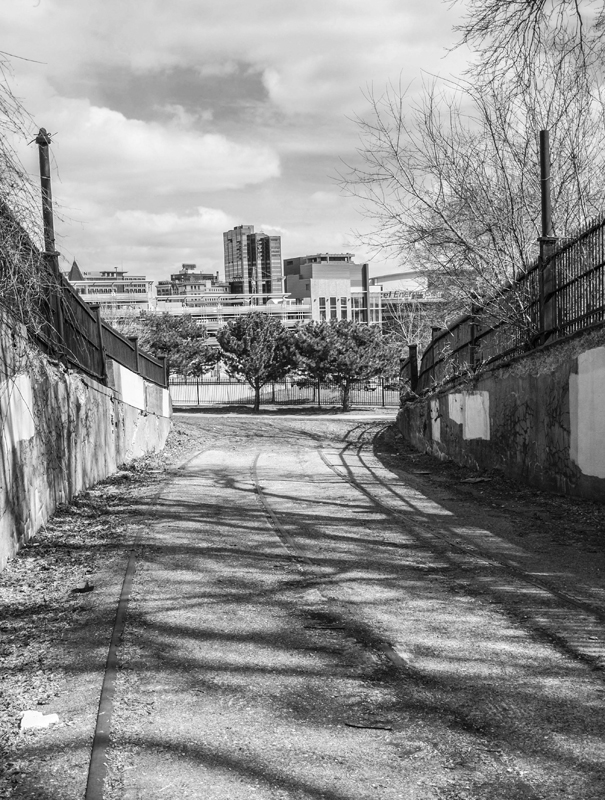
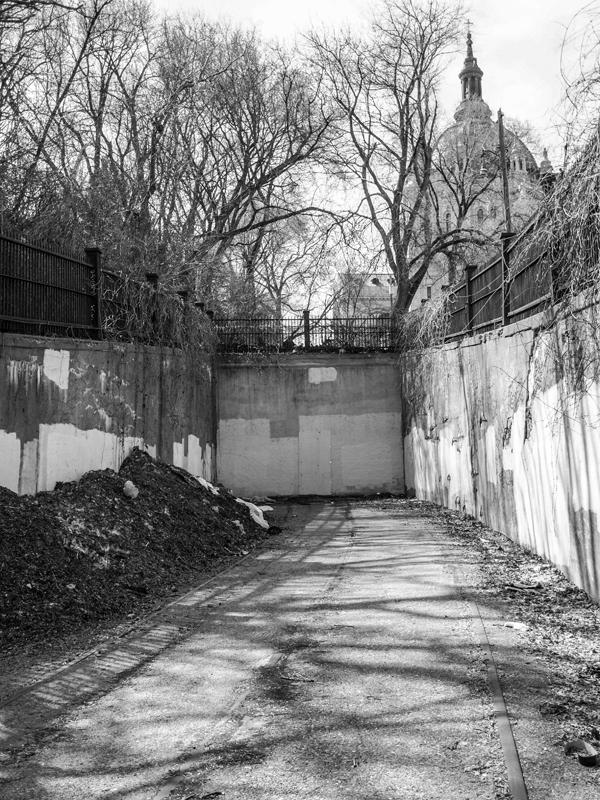
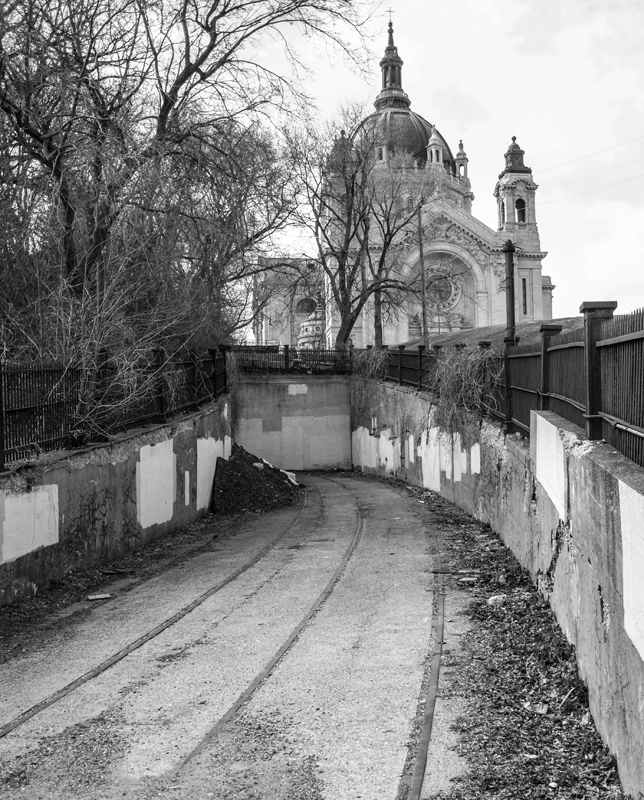
In 2009 a plan was proposed to clear the overgrown vegetation, remove graffiti, and perhaps repair the crumbling concrete and fence. In 2010 a historic plaque identifying the site’s significance was proposed. Unfortunately, at the time of this posting, neither of these have come to pass.
In 2005 a small hole was chopped into the concrete and explorers were able to enter the tunnel for the first time in 20 years. Photos can be found in various places around the internet, one of the best can be found here.
